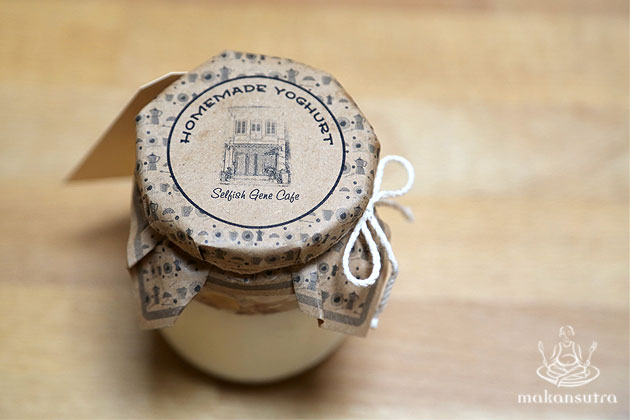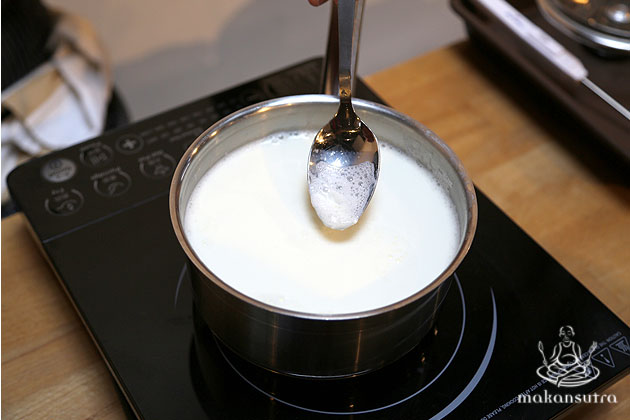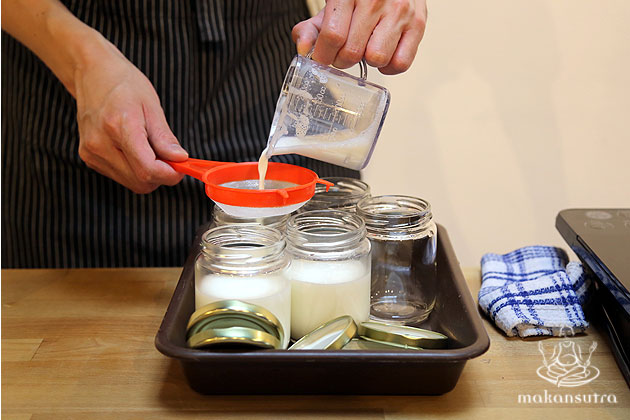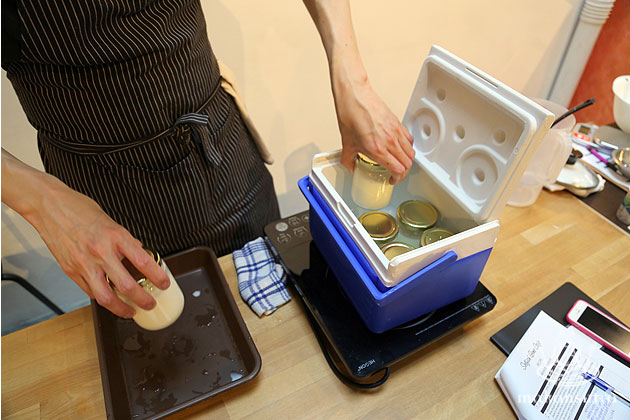
How to make yoghurt at home
By Catherine Ling - Tuesday, Oct 07, 2014
Love yoghurt but don’t want all the artificial additives and sugar overload in commercial brands? You can make your own beautifully creamy yoghurt at home, and save money doing so.

Yoghurt is basically made from the bacterial fermentation of milk. The bacteria used are known as yoghurt cultures. You may have seen the names Lactobacillus bulgaricus and Streptococcus thermophilus. These probiotic bacteria help lactose to ferment. Lactic acid is produced, acting on casein (milk protein) to give yoghurt its texture and characteristic tang.
Gene Mok of the Selfish Gene Cafe (40 Craig Road) started making his own yoghurt for the cafe as a substitute for buttermilk. It was easier to make it on demand than to order in bulk and risk the short shelf life. Thankfully, his father is a microbiologist and helped with the many experiments. This method is a simplified method that works for home use.
“You can use any milk – full cream, skim, even condensed milk. All you need are the milk proteins that will be broken down into lactic acid,” says Gene.
INGREDIENTS
Full cream or other milk 1L
Store bought plain yoghurt (with active cultures) 50g
EQUIPMENT
Saucepan
Food-grade digital thermometer
Measuring cup
Glass jars
Cooler box

First, you have to pasteurise the milk to kill undesirable bacteria. Warm the milk in a saucepan over medium heat to 90 degrees C. This also denatures the milk proteins so that they set together rather than form curds. Stir the milk gently as it heats to ensure the bottom doesn’t scorch and the milk doesn’t boil over. Remove from heat.
It is also a good idea to sterilise all the equipment used. Just pour boiling water and let it steep for 5 minutes in a hot water bath.
Allow the milk to cool to a temperature of about 45 degrees C. Skim off any skin formed on the milk during cooling.
Dilute the store-bought yoghurt with half a cup of the warm milk. Stir well until it’s smooth.

Add this thinned yoghurt mixture into the rest of the warm milk and mix thoroughly. This is a more gentle way of incorporating the yoghurt into the warm milk, instead of just dumping the cold yoghurt into the whole litre of hot milk (less of a shock to the live cultures).
Secure the lids and place jars in a cooler box. You could also use a yoghurt maker or warmed up oven.

Allow the yoghurt to set for 4 to 8 hours. The longer it ferments, the firmer and more tart it will be.
Do not disturb the milk as it ferments. You lose heat each time you open the box, and by moving it around, you may end up with a broken jelly texture that’s not smooth. Check after 4 hours to see if it’s reached the required consistency and flavour. Continue to culture for another 1 to 2 hours if necessary.
One litre of milk will yield approximately six of these 170ml jars – a pretty good investment. If you’d like to add fruit or other flavours, it’s best to mix it in after the yoghurt has cultured. “The high acidity in certain fruits like citrus and berries may cause the milk to curdle otherwise,” says Gene.
Well, there are many methods of making yoghurt, but this one certainly looks easy enough and the result is smooth and creamy. Perfect with your favourite toppings – fruit, nuts, granola, compote or even salted caramel. You can also use it in cakes and bakes (tandoori chicken, anyone?). So go ahead and play with some good bacteria. Homemade yoghurt can be a real treat!


